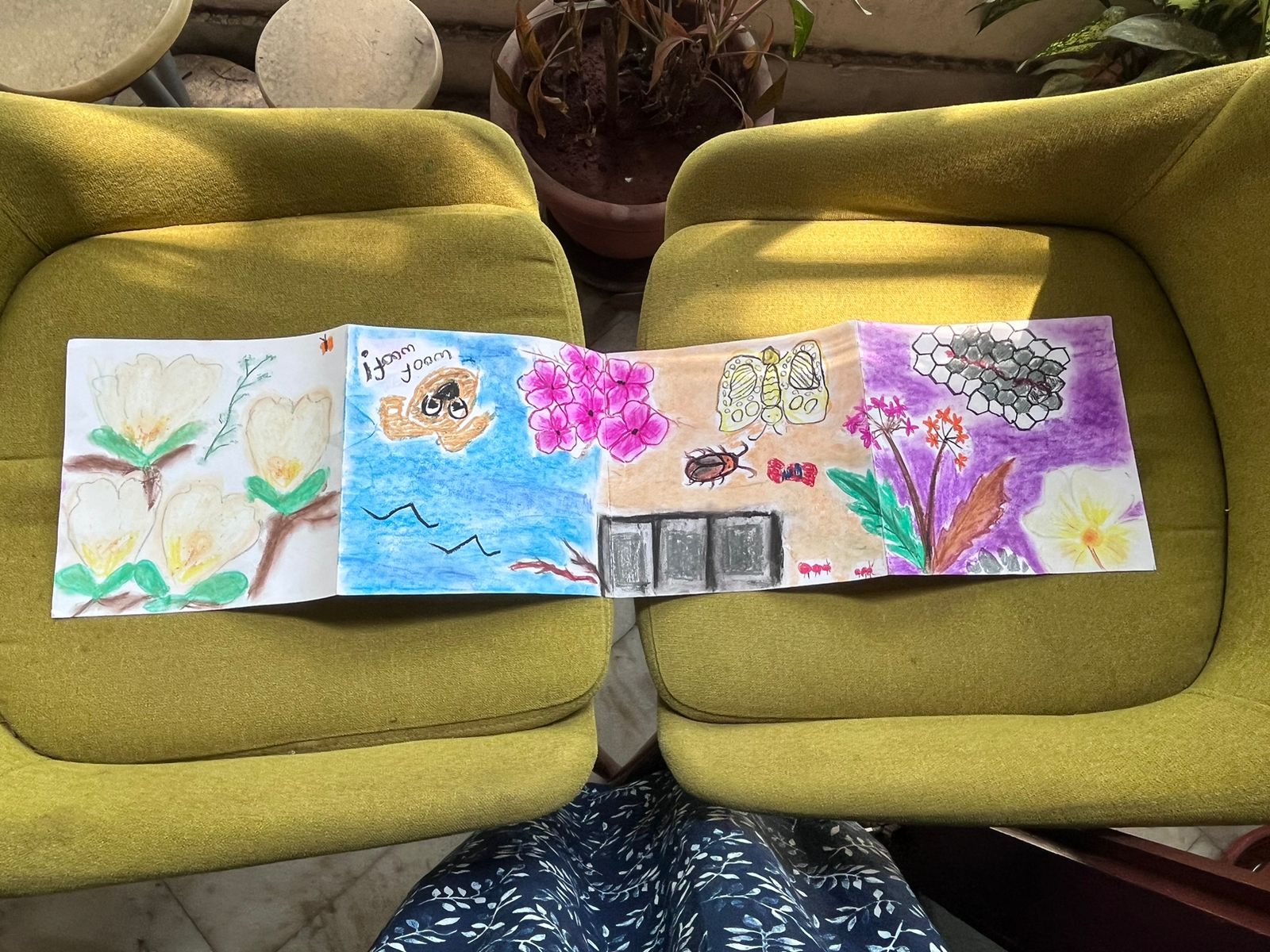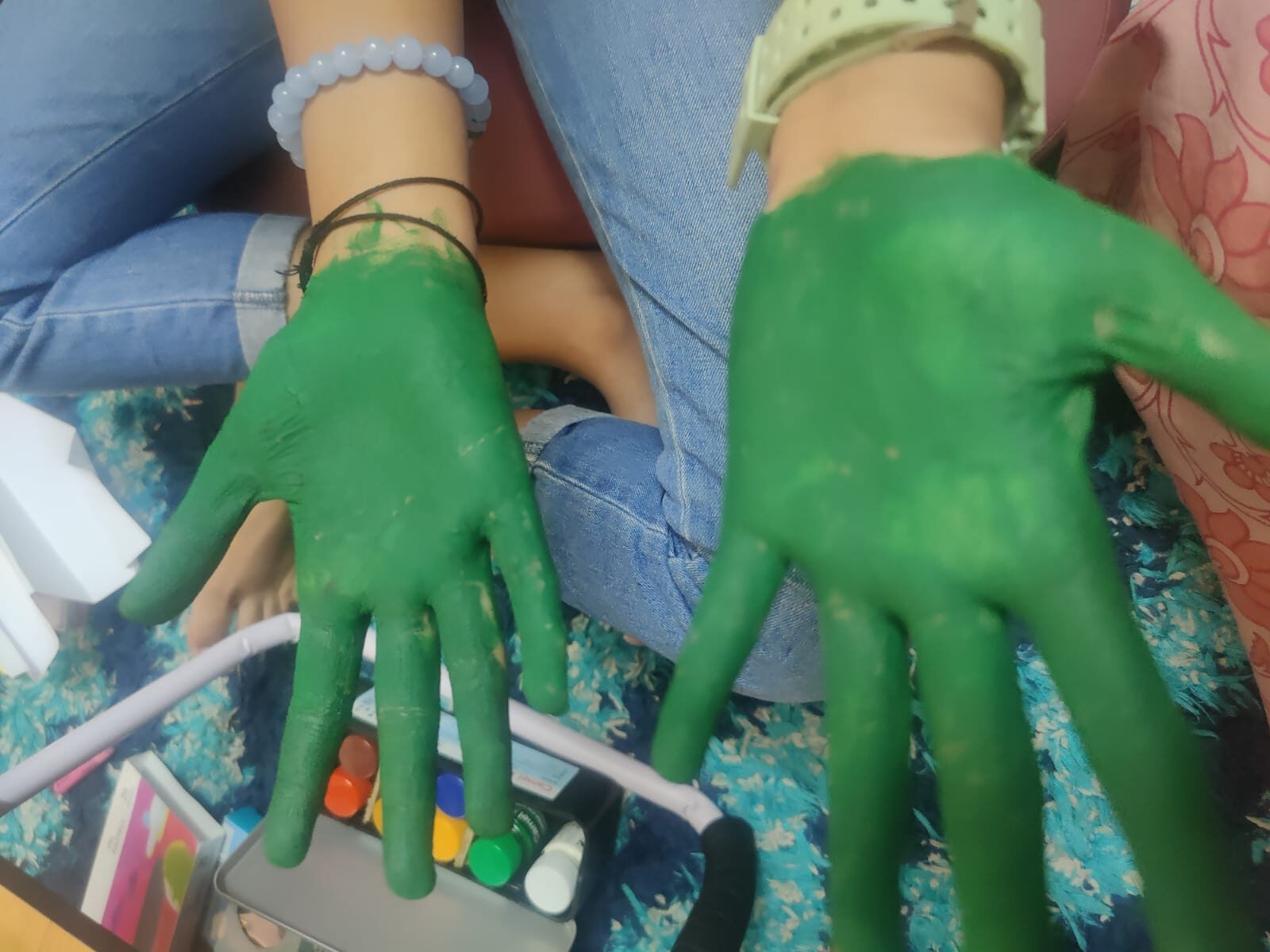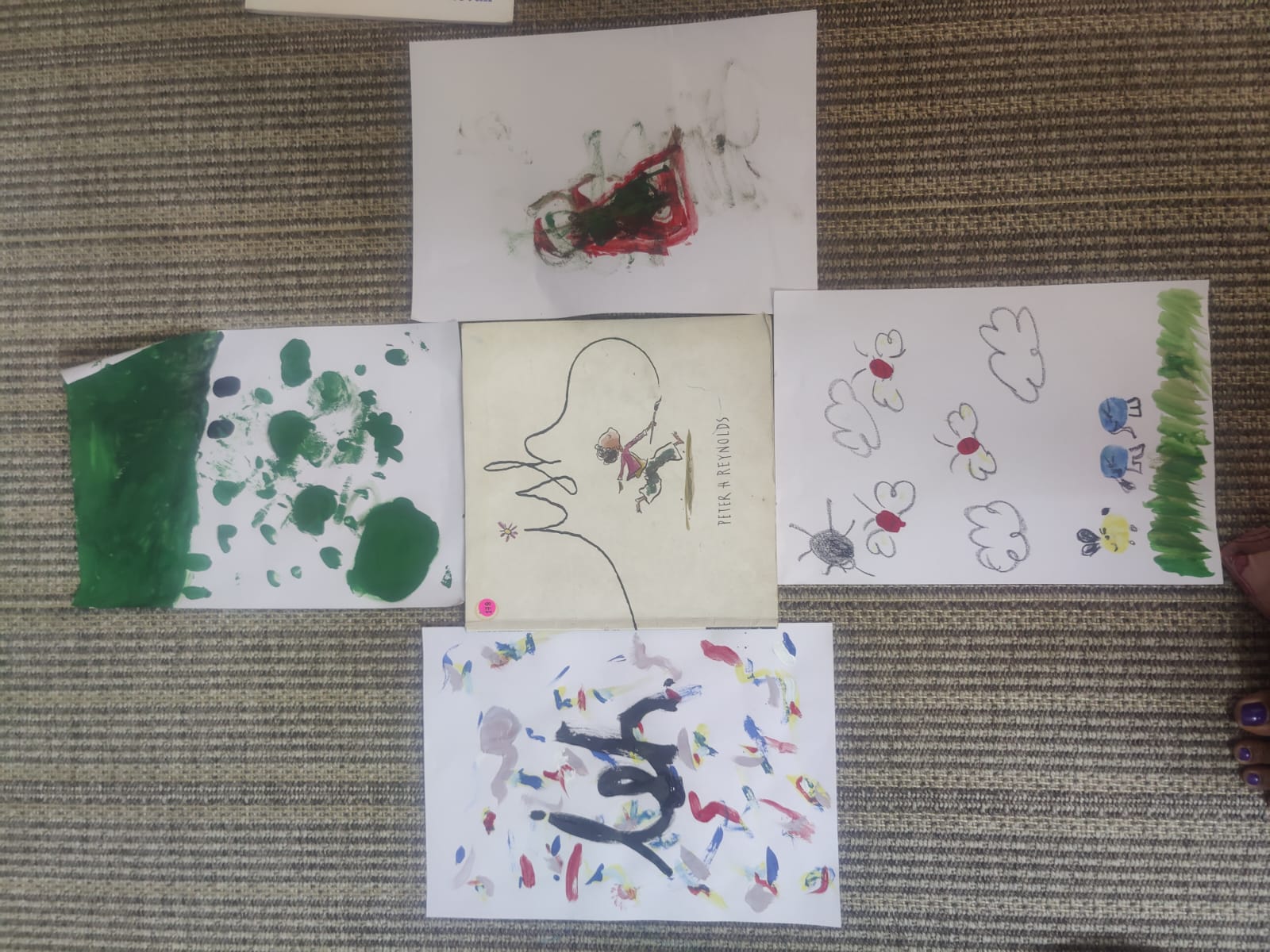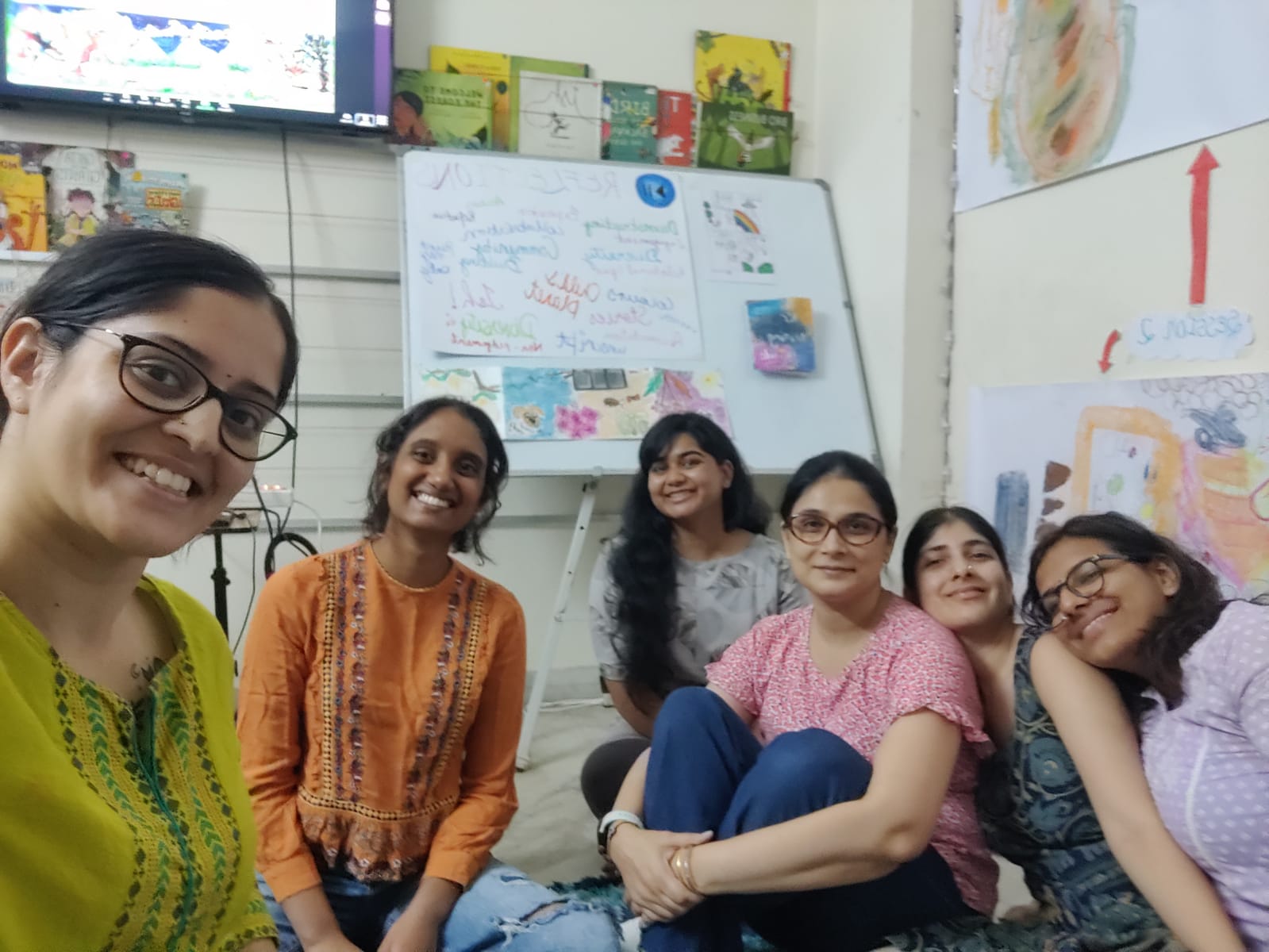Written by Pause Library (Pause for Perspective) team members Anuradha, Eera, Sahithi, Sammy, Shravani, and Vasavi
Our team, the Pause Library Team at Pause for Perspective, joined Bookworm’s workshop in Visual Arts Practices in the Library as we felt it might offer a valuable deepening into our work. Mindfulness, bibliotherapy, and expressive arts therapy are integral to our work and we felt this workshop would help us explore a new way of blending these modalities. We were also interested in how this workshop focused specifically on working with children, as we felt this approach to children’s work had a lot of potential.
Learning how to integrate visual arts into library practices has greatly enriched the work we do at Pause Library. Through this program, we saw the power of visual arts in helping us access, accommodate, and deepen.
Not only did this program help us enrich the work we do, but it also helped us deepen our bond as a team as well as introduced us to a new community of educators. The online gatherings were rich and really allowed for building on our practice as a team, and and as a collective. Our team found so much joy in engaging with the practices together and in witnessing how other participants engaged as well. There was so much authenticity and warmth in the community’s sharings, we’re grateful to have shared this experience together and have our experiences witnessed by the community. Our journey through the program was defined by our deepening and further nuancing of our intention and stance.
Sitting with children was a wonderful experience. It was especially insightful to see how incorporating visual arts could open up our community and library space for children. Tapping into and witnessing the innate wisdom these children have, many coming from marginalized identity locations, was beautiful and humbling. We saw children build the space together, with openness and honesty.
Through our journey in this program we cherished and centered the valuing of process over outcome, and slowing down. These are foundational to our work at Pause for Perspective, and finding a new way to access them was exciting.
It was an interesting exercise exploring how to integrate a social justice stance into the practices we learnt throughout the program. We found that while bringing these practices to children, it was important to hold a stance of ‘un-scripting’ (this looked like stepping out of teacher or mentor like roles, having an open ‘no rules’ space, and more) and “visiting the child’s planet” to meet them where they are at and explore the ecosystem with them. We noticed that un-scripting and visiting the child’s planet were really made possible when we engaged in the practices with the children – even if it’s just by scribbling next to them during an ice-breaking activity. Joining the collaborative process inbuilt in the book-making practice is another example of how we did this.
We also incorporated the social justice stance by modifying practices to deconstruct and explore systemic ideas. An example of this was how we took the comic-making practice to a school that we worked with in collaboration with Teach for India, and asked students to make comics around gender norms and roles as a way to explore these topics.
We focused on making the sessions we held during the program free, queer and neurodivergent affirmative spaces where we not just accommodate but push for the expression, engagement and reclaiming of space for children that may not have access to the same in other spaces.
It was important to us that we made this space as inclusive and accessible as possible so sitting with and experimenting with modifications to practices was important. It was a generative and valuable experience, helping us nuance our approach to community work with children. Intersectionality of age and other diversities was a focus point for us while holding space – we found that attuning these practices to age-diverse groups opened up new and interesting possibilities (an example of this was us expressing through colours, scribbles, or images instead of words with younger kids for who reading wasn’t as accessible). We also found that incorporating art especially helped with this, there was a grounding and gentleness that really allowed us to encourage opening up while maintaining and building safety. One of the key aspects that stood out for us in this journey is the possibilities such spaces create for building and practicing relational skills, while accommodating, respecting, and celebrating diverse ways of being. We saw this key aspect really blossoming when we conducted the nature observation and art practice on an age-diverse and neurodiverse group (4 years – 15 years).
Mindfulness and embodied stance, bibliotherapy, and expressive arts therapy are core to our work as a mental health, community, and advocacy space. This program allowed us to explore new ways to integrate these modalities, further expanding on the work we’re doing. Curating the workshops we conducted as program participants inspired us to explore new ways of engaging with the special picture book collection we have at Pause library. We opened each workshop with specially curated activities around picture books from our space, with the intention of warming up, ice-breaking, and getting the children working with their hands and art materials. A couple of the books we used in these activities include “Tiger Days” by M.H. Clark and “Ish” by Peter H. Reynolds.
Our team’s journey through this program has been fascinating and warm – engaging in practices together was generative and insightful, and integrating the learnings into our library and community work has been endlessly valuable. Indulging in the wonder, taking up space, authenticity, joy, and compassion that children have in leaps and bounds has been such a special experience. We have so much hope and excitement for continuing our journey in exploring visual arts in our community library space, and what this could open up for community work, and mental health work and advocacy.




